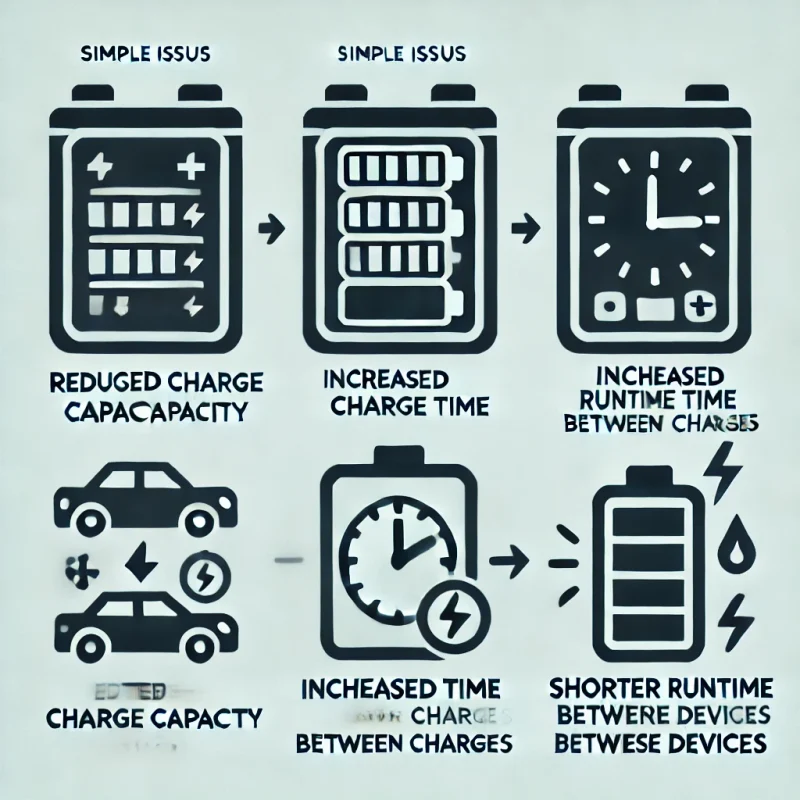What is the typical lifespan of a portable power station
Portable power stations provide electricity for gadgets like phones, laptops, and small appliances. They’ve become increasingly popular due to their portability, quiet operation, and ability to charge via solar panels, making them ideal for outdoor adventures, emergency backup power, and off-grid living.
The typical lifespan of a portable power station is usually between 2 to 10 years, depending on the type of battery used.
Charge Cycles
- Lithium-ion Batteries Generally last about 500 to 2,000 charge cycles. A charge cycle is one full discharge and recharge.
- Lead-Acid Batteries: Typically last around 200 to 1,000 charge cycles.
Factors Affecting Battery Life
- Usage Patterns: Frequent deep discharges can reduce lifespan.
- Temperature: Extreme heat or cold can negatively impact performance and longevity.
- Charging Habits: Overcharging or using improper chargers can damage the battery.
- Maintenance: Regular care and proper storage can help extend battery life.
| Aspect | Description |
|---|---|
| Importance of Portable Power Stations | – Provides off-grid power for outdoor activities (camping, hiking, RVs). – Serves as an emergency backup during power outages. – Supports renewable energy solutions with solar charging. |
| Typical Lifespan (Years) | – Lithium-ion: 2 to 5 years – LiFePO4: 5 to 10 years – Lead-acid: 1 to 3 years |
| Charge Cycles (Lifespan) | – Lithium-ion: 500 to 2,000 cycles – LiFePO4: 2,000 to 3,500 cycles – Lead-acid: 200 to 1,000 cycles |
| Factors Affecting Lifespan | – Usage patterns (deep discharges reduce lifespan). – Temperature (extreme heat or cold). – Charging habits (overcharging or improper chargers). – Maintenance (proper storage and care). |
| Signs of Decreased Lifespan | – Shorter runtime between charges. – Increased charging time. – Reduced overall capacity. |
Understanding Battery Lifespan
Battery Lifespan refers to how long a battery can last before its capacity significantly decreases. It’s typically measured in years and charge cycles.
How charge cycles impact the overall lifespan.
- Years: A battery’s lifespan can range from 2 to 10 years, depending on the type and usage.
- Charge Cycles: A charge cycle is one complete discharge and recharge. Batteries have limited cycles (e.g., 500-2,000 for lithium-ion), and each cycle slightly reduces capacity.
How charge cycles impact the overall lifespan.
Below Is a visual representation showing how charge cycles impact the overall lifespan of a battery. It illustrates how the battery’s capacity gradually decreases as the number of charge cycles increases.

Types of Batteries and Their Lifespan
-
- Lithium-ion Batteries: Lifespan (500 to 2,000 charge cycles).
- Lithium Iron Phosphate (LiFePO4) Batteries: Lifespan (2,000 to 3,500 charge cycles).
- Lead-Acid Batteries: Lifespan (200 to 1,000 charge cycles).
| Battery Type | Lifespan (Charge Cycles) |
|---|---|
| Lithium-ion Batteries | 500 to 2,000 charge cycles |
| Lithium Iron Phosphate (LiFePO4) Batteries | 2,000 to 3,500 charge cycles |
| Lead-Acid Batteries | 200 to 1,000 charge cycles |
Critical Factors Affecting Battery Life
-
- Usage Patterns: Effects of frequent or deep discharges.
- Environmental Factors: Impact of temperature extremes (heat/cold).
- Charging Practices: Importance of proper charging methods and equipment.
- Maintenance & Storage: Tips to extend battery life (cleaning, storing in cool, dry place).
| Factor | Impact on Battery Life |
|---|---|
| Usage Patterns | – Frequent or deep discharges can reduce overall lifespan. – Recharge before the battery drops too low. |
| Environmental Factors | – Extreme heat can cause overheating and damage. – Extreme cold reduces performance and capacity. |
| Charging Practices | – Proper charging methods and using the correct equipment are critical. – Avoid overcharging the battery. |
| Maintenance & Storage | – Clean terminals and store them in a cool, dry place. – Avoid leaving the battery unused with a low charge. |
Signs Your Portable Power Station Battery is Wearing Out
-
- Reduced charge capacity.
- Increased charging time.
- Shorter runtime between charges.
Here is the image representing the signs that a portable power station battery is wearing out, including reduced charge capacity, increased charging time, and shorter runtime between charges.

Maximizing the Lifespan of Your Portable Power Station
-
- Best practices for usage, charging, and storage.
- Recommendations for protecting the power station from harsh environments.
Conclusion
-
- Recap of typical lifespan and factors that affect it.
- Care and maintenance are essential to get the most out of your portable power station.




